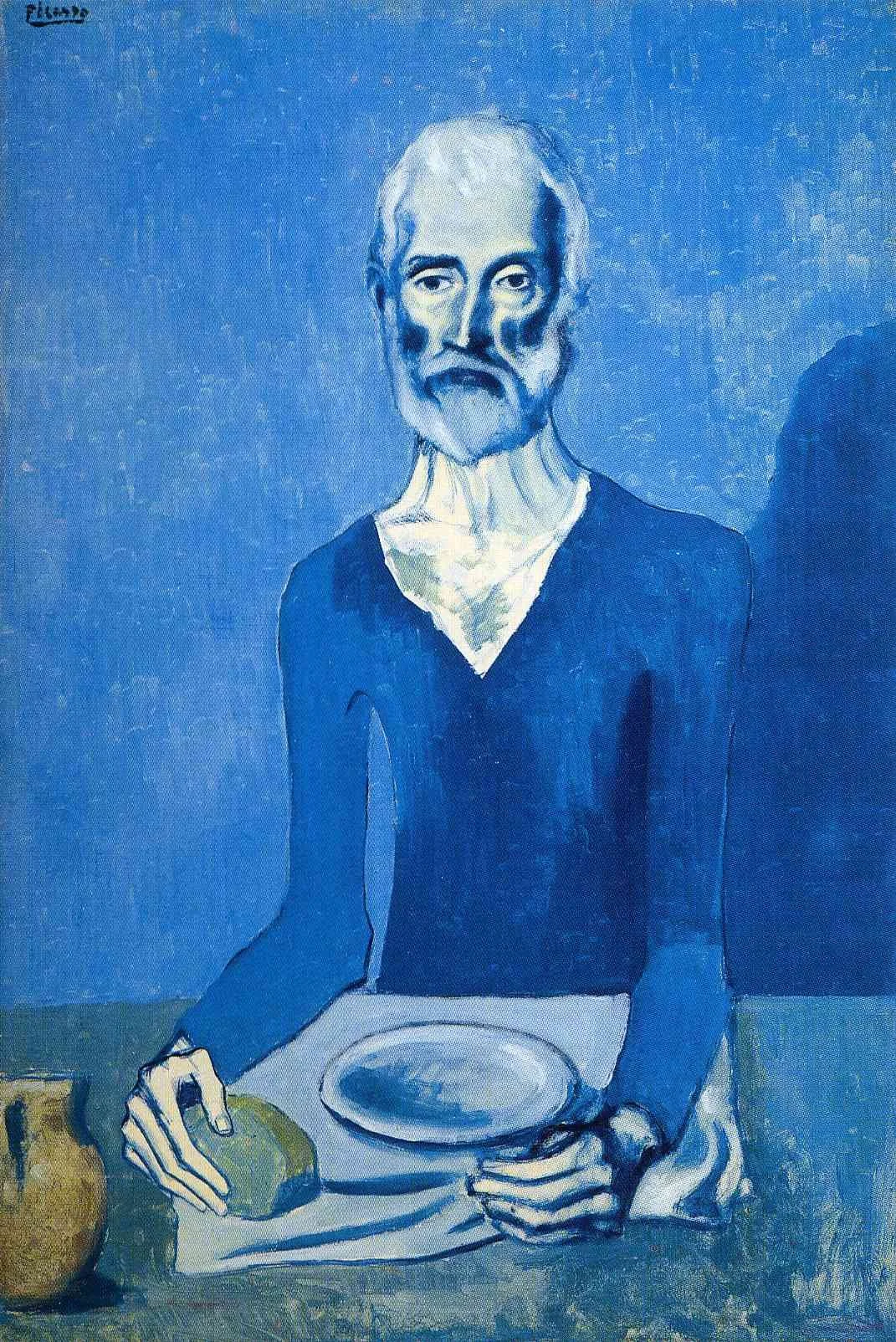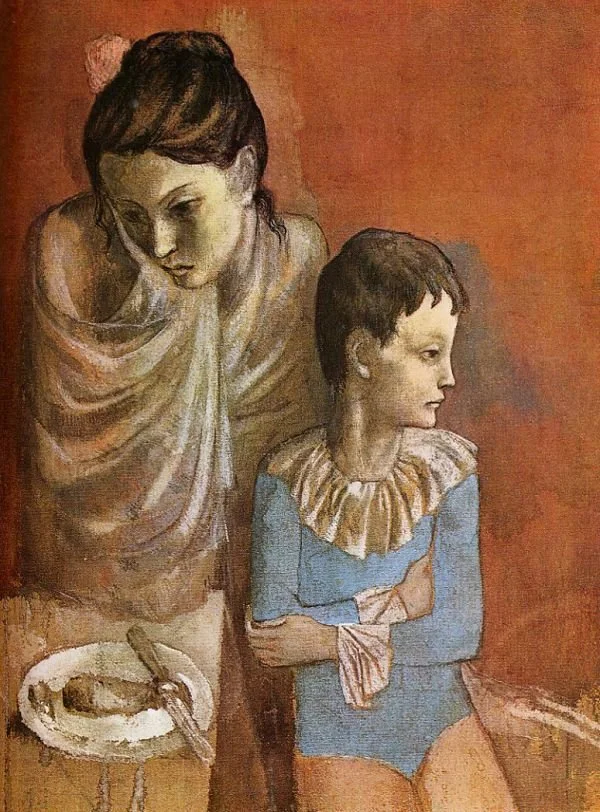Picasso’s Le Moulin de la Galette (1900) oozes with the raw, electric energy of Parisian nightlife. Painted at just 19, it flirts with Impressionist and Post-Impressionist styles, using loose brushstrokes and a sultry, glowing palette. The scene is alive with elegantly dressed figures, some lost in dance, others locked in whispered intrigue. Shadows blur bodies, teasing a sense of movement and mystery. Beneath the glamour, there’s a restless, almost reckless vibe, a world on the edge of indulgence. Though pre-Cubist, it’s a bold glimpse of Picasso’s genius in capturing mood, desire, and the chaos of the moment.
“Others have seen what is and asked why. I have seen what could be and asked why not.”
Pablo Picasso, one of the most influential artists of the 20th century, was born on October 25, 1881, in Málaga, Spain. His full name, Pablo Diego José Francisco de Paula Juan Nepomuceno María de los Remedios Cipriano de la Santísima Trinidad Martyr Patricio Clito Ruíz y Picasso, just reflects the richness of his Spanish heritage. From a young age, Picasso displayed an exceptional talent for drawing and painting, and his early exposure to art, given that his father was an art professor, laid the foundation for his extraordinary career.
Picasso's artistic journey began in earnest when he moved to Barcelona in 1895 to study at the School of Fine Arts. By the age of 16, he had already gained admission to the prestigious Royal Academy of San Fernando in Madrid. However, Picasso's insatiable curiosity and desire for artistic exploration led him to break away from traditional academic styles.
In 1901, Picasso relocated to Paris, the epicenter of the art world, where he found himself immersed in the bohemian lifestyle of Montmartre. The French capital became the crucible for the evolution of his artistic style. His early works, known as the "Blue Period" (1901-1904), were characterized by melancholy subjects and a predominantly blue color palette, reflecting a period of personal and emotional turmoil.
Following the Blue Period, Picasso transitioned into a "Rose Period" (1904-1906), marked by warmer tones and a focus on circus performers and acrobats. These periods laid the groundwork for the groundbreaking movement that would define much of his career—the advent of Cubism.
Cubism, co-founded by Picasso and Georges Braque, shattered traditional notions of perspective and representation. The movement, initiated around 1907, introduced fragmented forms and the simultaneous portrayal of multiple viewpoints within a single image. Picasso's iconic work, "Les Demoiselles d'Avignon" (1907), is considered a seminal piece in the development of Cubism, showcasing the influence of African and Iberian art on his evolving style.
The subsequent years saw Picasso's constant innovation, with Cubism evolving into Analytical Cubism and later Synthetic Cubism. Picasso's collaborations with Braque resulted in a series of revolutionary works that challenged the boundaries of artistic expression.
As World War I unfolded, Picasso's work diversified further. He engaged with classicism, surrealism, and neoclassicism, displaying a versatility that highlighted his mastery of various artistic techniques. One of his notable works during this period is "Guernica" (1937), a powerful and politically charged depiction of the horrors of war.
Picasso's personal life was as dynamic as his art. He had tumultuous relationships, including marriages and affairs, and his love life often found its way onto his canvases. His muses, including Fernande Olivier, Dora Maar, and Jacqueline Roque, became subjects of some of his most celebrated works.
Throughout his prolific career, Picasso produced an estimated 50,000 artworks, including paintings, drawings, sculptures, ceramics, and textiles. His ability to adapt and reinvent himself continually kept him at the forefront of the art world.
Pablo Picasso passed away on April 8, 1973, leaving behind an unparalleled legacy. His impact on the trajectory of modern art is immeasurable, and his influence resonates across generations. Picasso's relentless pursuit of innovation and his fearless approach to breaking artistic conventions make him a towering figure in the history of art—a visionary who transformed the canvas into a space for boundless creativity and perpetual reinvention.
Motherhood_La_Maternité_1901.jpg
My Rating: 8/10
My Rating: 8/10
p.s.
we stand now where two roads diverge. but unlike the roads in robert frost’s familiar poem, they are not equally fair. the road we have long been travelling is deceptively easy, a smooth super highway on which we progress with great speed, but at its end lies disaster. the other fork of the road - the one less travelled by offers our last, our only chance to reach a destination that assures the preservation of the earth.






